Table of Contents
Claude Debussy: The 100 most inspiring musicians of all time
The works of French composer Claude Debussy (Achilles-Claude Debussy) (b. Aug. 22, 1862, Saint-German-en-Laye, France —d. March 25, 1918, Paris) have been a seminal force in the music of the 20th century. Debussy developed a highly original system of harmony and musical structure that expressed in many respects the ideals to which the impressionist and symbolism painters and writers of his time aspired.
Early Period
Debussy showed a gift as a pianist by the age of nine. He was encouraged by Madame Mauté de Fleurville, who was associated with the Polish composer Frédéric Chopin, and in 1873 he entered the Paris Conservatory, where he studied the piano and composition, eventually winning in 1884 the Grand Prix de Rome with his cantata L’Enfant prodigue (The Prodigal Child ).
While living with his parents in a poverty-stricken suburb of Paris, he unexpectedly came under the patronage of a Russian millionairess, Nadezhda Filaretovna von Meck, who engaged him to play duets with her and her children. He traveled with her to her palatial residences throughout Europe during the long summer vacations at the Conservatory. In Paris during this time he fell in love with a singer, Blanche Vasnier, the beautiful young wife of an architect; she inspired many of his early works.

This early style is well illustrated in one of Debussy’s best-known compositions, Clair de Lune. The title refers to a folk song that was the conventional accompaniment of scenes of the love-sick Pierrot in the French pantomime; and indeed the many Pierrot-like associations in Debussy’s later music, notably in the orchestral work Images (1912) and the Sonata for Cello and Piano (1915; originally titled Pierrot fâché avec la lune [“Pierrot Vexed by the Moon”]), show his connections with the circus spirit that also appeared in works by other composers.
Claude Debussy’s Sheet Music download.
Middle Period
As a holder of the Grand Prix de Rome, Debussy was given a three-year stay at the Villa Medici, in Rome, where, under what were supposed to be ideal conditions, he was to pursue his creative work. Debussy eventually fled from the Villa Medici after two years and returned to Blanche Vasnier in Paris. At this time Debussy lived a life of extreme indulgence. Once one of his mistresses, Gabrielle (“Gaby”) Dupont, threatened suicide. His first wife, Rosalie (“Lily”) Texier, a dressmaker, whom he married in 1899, did in fact shoot herself, though not fatally, and, Debussy himself was haunted by thoughts of suicide.
The main musical influences on Debussy were the works of Richard Wagner and the Russian composers Aleksandr Borodin and Modest Mussorgsky. Wagner fulfi lled the sensuous ambitions not only of composers but also of the symbolist poets and the impressionist painters.
Wagner’s conception of Gesamtkunstwerk (“total art work”) encouraged artists to refi ne upon their emotional responses and to exteriorize their hidden dream states, often in a shadowy, incomplete form; hence the more tenuous nature of the work of Wagner’s French disciples.
It was in this spirit that Debussy wrote the symphonic poem Prélude à l’après-midi d’un faune (1894). Other early works by Debussy show his affinity with the English Pre-Raphaelite painters; the most notable of these works is La Damoiselle élue (1888), based on The Blessed Damozel (1850), a poem by the English poet and painter Dante Gabriel Rossetti.
In the course of his career, however, which covered only 25 years, Debussy was constantly breaking new ground. His single completed opera Pelléas et Mélisande (first performed in 1902) demonstrates how the Wagnerian technique could be adapted to portray subjects like the dreamy nightmarish figures of this opera who were doomed to self-destruction.
Debussy and his librettist, Maurice Maeterlinck, declared that they were haunted in this work by the terrifying nightmare tale of Edgar Allan Poe, The Fall of the House of Usher. The style of Pelléas was to be replaced by a bolder, more highly coloured manner. In his seascape La Mer (1905) he was inspired by the ideas of the English painter J. M.W. Turner and the French painter Claude Monet. In his work, as in his personal life, he was eager to gather experience from every region that the imaginative mind could explore.
Late Period
In 1905 Debussy’s illegitimate daughter, Claude-Emma, was born. He had divorced Lily Texier in 1904 and subsequently married his daughter’s mother, Emma Bardac. For his daughter he wrote the piano suite Children’s Corner (1908).
Debussy’s spontaneity and the sensitive nature of his perception facilitated his acute insight into the child mind, an insight noticeable particularly in Children’s Corner; in the Douze Préludes, two books (1910, 1913; “Twelve Preludes”), for piano; and in the ballet La Boîte à joujoux (1st perf. 1919;
The Box of Toys). In his later years, it is the pursuit of illusion that marks Debussy’s instrumental writing, especially the strange, otherworldly Cello Sonata. This noble bass instrument takes on, in chameleon fashion, the character of a violin, a flute, and even a mandolin.
Evolution of His Work
Debussy’s music marks the first of a series of attacks on the traditional language of the 19th century. He did not believe in the stereotyped harmonic procedures of the 19th century, and indeed it becomes clear from a study of mid-20th-century music that the earlier harmonic methods were being followed in an arbitrary, academic manner.
Debussy’s inquiring mind similarly challenged the traditional orchestral usage of instruments. He rejected the traditional dictum that string instruments should be predominantly lyrical. The pizzicato scherzo from his String Quartet (1893) and the symbolic writing for the violins in La Mer, conveying the rising storm waves, show a new conception of string colour. Similarly, he saw that woodwinds need not be employed for fireworks displays; they provide, like the human voice, wide varieties of colour.
Debussy also used the brass in original colour transformations. In fact, in his music, the conventional orchestral construction, with its rigid woodwind, brass, and string departments, finds itself undermined or split up in the manner of the Impressionist painters. Ultimately, each instrument
becomes almost a soloist, as in a vast chamber-music ensemble. Finally, Debussy applied an exploratory approach to the piano, the evocative instrument par excellence.
In his last works, the piano pieces En blanc et noir (1915; In Black and White) and in the Douze Études (1915; “Twelve Études”), Debussy had branched out into modes of composition later to be developed in the styles of Stravinsky and the Hungarian composer Béla Bartók. It is certain that he would have taken part in the leading movements in composition of the years following World War I. His life, however, was tragically cut short by cancer.
The Best of Debussy
Pianist: Pascal Rogé
Track List:
Arabesque Nº1 4:21 Arabesque Nº2 7:49 Clair De Lune 13:29 Passepied 16:46 Rêverie 21:40 Hommage A Rameau 29:22 Voiles 33:41 Les Sons Et Les Parfums Tournent Dans L’air Du Soir 37:58 La Fille Aux Cheveux De Lin 41:02 La Cathédral Engloutie 48:10 Musiciens 50:35 Le Petit Berger 54:05 Golliwogg’s Cakewalk 57:13 L’isle Joyeuse 1:03:35 Prelúdio para a tarde de um fauno
Browse in the Library:
| Artist or Composer / Score name | Cover | List of Contents |
|---|---|---|
| Star Trek The Motion Picture – The Enterprise – Jerry Goldsmith (Musescore File).mscz | ||
| Star Wars – Piano Duet (Williams John (Cop)Keveren Phillip (Crt)) |
 |
|
| Star Wars Episode 1 – The Phantom Menace – Duel Of The Fates – John Williams |
 |
|
| Star Wars Episode 5 – The Empire Strikes Back – Main Theme | Star Wars Episode 5 – The Empire Strikes Back – Main Theme | |
| Star Wars Episode 5 – The Empire Strikes Back – The Asteroid Field – John Williams | ||
| Stardust Crusaders – Jotaros Theme From Jojos Bizarre Adventures |
 |
|
| Stardust Ilan Eshkeris by Ian Sapiro A film score guide (Book) |
 |
|
| Starfox64 – Maintheme – Kondokoji |
 |
|
| Starlight Express – Andrew Lloyd Webber Starlight Express |
 |
Starlight Express – Andrew Lloyd Webber Starlight Express |
| Status Quo Rock All Over The World Piano Vocal.mscz | ||
| Status Quo – Rockin All Over The World Guitar Vocal Album Songbook |
 |
Status Quo – Rockin All Over The World Guitar Vocal Album Songbook |
| Status Quo Whatever You Want Guitar Tab | Status Quo Whatever You Want Guitar Tab | |
| Status Quo Guitar Legends Guitar TABs |
 |
Status Quo Guitar Legends Guitar TABs |
| Status Quo In The Army Now (guitar) |
 |
|
| Status Quo Living On An Island Bass Transcription | Status Quo Living On An Island Bass Transcription | |
| Status Quo Rock Til You Drop Guitar Songbook |
 |
Status Quo Rock Til You Drop Guitar Songbook |
| Status Quo Rockin All Over The World |
 |
|
| Stavros Lantsias Waltz of the Eyes |
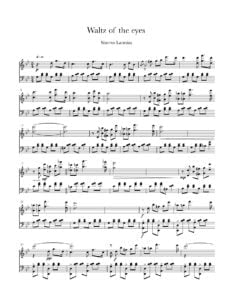 |
|
| Steamboy – Manchester1886 – Steve Jablonsky | ||
| Steamby – Flyinthesky – Steve Jablonsky | ||
| Steely Dan Songbook Complete |
 |
Steely Dan Songbook Complete |
| Stefan Schyga Guitar Learn How To Play The Classical Guitar |
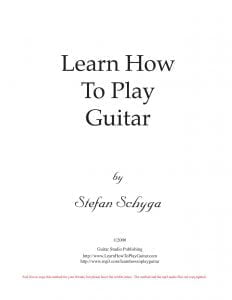 |
|
| Stefano Bollani – Antonia (Antonio Zambrini) spartiti Jazz Transcription |
 |
|
| Stefano Bollani – Antonia Antonio Zambrini (Jazz Transcription) (Musescore File).mscz | ||
| Stefanuk Misha V. – Jazz Piano Chords |
 |
|
| Stella by Starlight by Ned Washington and Victor Young JAZZ PLAY ALONG LEAD SHEET MUSIC | Stella by Starlight | |
| Stella By Starlight Victor Young (Jazz Standard) (Musescore File).mscz | ||
| Stella, Simone – Canon on the name B.A.C.H. (piano) |
 |
|
| Stella, Simone – Etude-Bizzarria (cello) |
 |
|
| Stella, Simone – Jeux de cromorne (organ) |
 |
|
| Stella, Simone – Jeux de flutes (organ) |
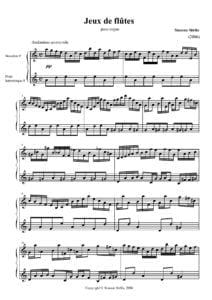 |
|
| Stella, Simone – Les fleurs du mal (cello&piano) |
 |
|
| Stella, Simone – Victimae Paschali, versetto (organ) |
 |
|
| Stelvio Cipriani Anonimo Veneziano |
 |
|
| Stephane Boget – Les Secrets Du Hard Rock (FR) avec audio MP3 et Tablature |
 |
secrets du hard rock |
| Stephen Duro – Forget Me Not Waltz (ABRSM Piano) |
 |
|
| Stephen Foster Songbook (published 1854) |
 |
|
| Stephen Goss Guitar Concerto 2012 Complete Score for guitar and orchestra |
 |
|
| Stephen Hough Song Transcriptions for solo piano |
 |
|
| Stephen Sanchez – Until I Found You Sheet Music |
 |
|
| Stephen Schwartz Songbook |
 |
Stephen Schwartz Songbook |
| Steve Eckels – 20 Easy Classical Guitar Pieces For Kids with TABs |
 |
Steve Eckels – 20 Easy Classical Pieces For Kids with TABs |
| Steve Green – Find us faithful – Easy Piano |
 |
|
| Steve Green – Household Of Faith (Piano solo sheet music) |
 |
|
| Steve Howe – All My Yesterdays (Book) |
 |
|
| Steve Howe Guitar Pieces |
 |
Steve Howe Guitar Pieces |
| Steve Morse Southern Steel Guitar Songbook with Tablature |
 |
Steve Morse Southern Steel Guitar Songbook |
| Steve Reich – Writings On Music (Book) | Steve Reich – Writings On Music (Book) | |
| Steve Reich Electric Counterpoint Solo |
 |
|
| Steve Vai – Guitar Styles & Techniques (Signature Licks) with Tablature |
 |
Steve Vai – Guitar Styles & Techniques (Signature Licks) |
| Steve Vai Alien Love Secrets Naked Vamps Guitar Tabs signature licks |
 |
Steve Vai Alien Love Secrets Naked Vamps Guitar Tabs signature licks |
| Steve Vai Fire Garden Songbook Guitar Tabs |
 |
|
| Steve Vai Flexable Leftovers Guitar Tabs |
 |
Steve Vai Flexable Leftovers Guitar Tabs |
| Steve Vai Passion Warfare Songbook Guitar Tabs |
 |
|
| Steve Winwood Greatest Hits |
 |
Steve Winwood Greatest Hits |
| Steven Feifke Autumn Leaves sheet music transcription | Steven Feifke Autumn Leaves sheet music transcription | |
| Steven Feifke Confirmation sheet music transcription |
 |
|
| Steven Feifke Tenor Madness sheet music transcription |
 |
|
| Stevie Nicks – Greatest Hits (Songbook) – Piano Vocal Guitar Sheet Music) |
 |
Stevie Nicks – Greatest Hits (Songbook) – Piano Vocal Guitar Sheet Music) |
| Stevie Ray Vaughan – Signature Licks – The Guitar Style Of (play along with audio MP3) Guitar Tablature Songbook |
 |
Signature Licks – The Guitar Style Of Stevie Ray Vaughan |
| Stevie Ray Vaughan Plays Slow Blues Guitar TAB |
 |
Stevie Ray Vaughan Plays Slow Blues Guitar TAB |
| Stevie Wonder Isn’t She Lovely (As Played By Terrence Shider) |
 |
|
| Stevie Wonder – Don’t You Worry Bout A Thing | ||
| Stevie Wonder – Higher Ground | ||
| Stevie Wonder – I Just Called To Say I Love You | ||
| Stevie Wonder – Isn’t She Lovely Piano Vocal Guitar chords |
 |
|
| Stevie Wonder – Isnt She Lovely | ||
| Stevie Wonder – Knocks Me Off My Feet | ||
| Stevie Wonder – Lately | ||
| Stevie Wonder – Master Blaster (Jammin) El. Bass TAB sheet music |
 |
|
| Stevie Wonder – Master Blaster (Jammin) Guitar TABS & El. Bass sheet music |
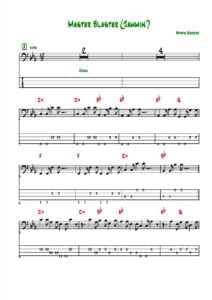 |
|
| Stevie Wonder – Master Blaster (Jammin) Piano sheet music | Stevie Wonder – Master Blaster (Jammin) Piano sheet music | |
| Stevie Wonder – My Cherie Amour | ||
| Stevie Wonder – Signed Sealed Delivered | ||
| Stevie Wonder – Songs In The Key Of Life (Book) |
 |
Stevie Wonder – Songs In The Key Of Life |
| Stevie Wonder – Superstition | ||
| Stevie Wonder – The Best of |
 |
Stevie Wonder – The Best of |
| Stevie Wonder – The Sound Of Stevie Wonder His Words And Music Book by James E. Perone Book |
 |
|
| Stevie Wonder – The Stevie Wonder Anthology |
 |
Stevie Wonder – The Stevie Wonder Anthology |
| Stevie Wonder – The Stevie Wonder Collection (Piano and Guitar) |
 |
The Stevie Wonder Collection (Piano and Guitar) |
| Stevie Wonder – You and I (piano solo sheet music) | Stevie Wonder – You and I (piano solo sheet music) | |
| Stevie Wonder – You Are The Sunshine Of My Life | ||
| Stevie Wonder – You Are The Sunshine Of My Life (piano solo) | Stevie Wonder – You Are The Sunshine Of My Life (piano solo) | |
| Stevie Wonder For Piano Solo (Songbook) (Stevie Wonder) |
 |
Stevie Wonder For Piano Solo (Songbook) (Stevie Wonder) |
| Stevie Wonder Hits (Guitar Songbook with TABS) – Stevie Wonder |
 |
Stevie Wonder Hits (Songbook) – Stevie Wonder |
| Stevie Wonder Hotter Than July |
 |
Stevie Wonder Hotter Than July |
| Stevie Wonder Isn’t She Lovely |
 |
|
| Stevie Wonder Moon Blue Piano solo |
 |
|
| Stevie Wonder The Great Songs (arranged for all organ) |
 |
Stevie Wonder The Great Songs |
| Stevie Wonder’s Hits (very easy piano, vocal & guitar) |
 |
Stevie Wonder’s Hits (easy piano, chords) |
| Sting Let Your Soul Be Your Pilot Sheet Music |
 |
|
| Sting The Singles Collection |
 |
Sting The Singles Collection |
| Sting – Broken Music A Memoir (Book) AutoBiography |
 |
|
| Sting – Every Breath You Take | ||
| Sting – Fields Of Gold | ||
| Sting – Fields Of Gold – The Best (Songbook) |
 |
The best of Sting |
| Sting – I’ll be missing you | Sting – I’ll be missing you | |
| Sting – Piano Solos |
 |
Sting – Piano Solos |
| Sting – The Book of My Life (Piano) | Sting – The Book of My Life (Piano) | |
| Sting and the Police – The Very Best Of |
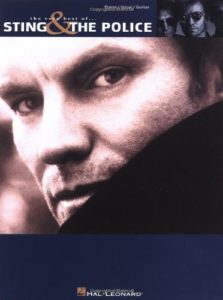 |
Sting & the police contents |
| Sting and The Police Every Breath You Take Guitar Tab |
 |
|
| Sting And The Police Every Breath You Take Guitar Tab Musescore File.mscz | ||
| Sting And The Police Every Breath You Take Jazzy Piano Solo arr. |
 |
|
| Sting And The Police Every Breath You Take Jazzy Piano Solo Arr. Musescore File.mscz | ||
| Sting If On A Winters Night Vocal Piano Songbook |
 |
Sting If On A Winters Night Vocal Piano Songbook |
| Sting Mercury Falling Piano Vocal Songbook |
 |
Sting – Mercury Falling (Songbook) contents—  |
| Sting Rock Score |
 |
|
| Sting Sacred Love |
 |
Sting Sacred Love contents — Sting Sacred love |
| Sting Ten Summoner 27s Tales Songbook |
 |
Sting Ten Summoner 27s Tales Songbook |
| Sting The Anthology (Guitar & Piano) |
 |
Sting The Anthology (Guitar & Piano) contents —  |
| Sting the very best of – Easy arrangements for Piano (Hans-Güter Heumann) |
 |
Sting the very best of – Easy arrangements for Piano |
| Sting- Every Little Thing She Does Is Magic – Piano | Sting Every-Little-Thing-She-Does-Is-Magic-Piano | |
| Stockhausen, Karlheinz – Klavierstuck IX |
 |
|
| Stockhausen, Karlheinz – Klavierstuck VI |
 |
|
| Stockhausen, Karlheinz – Klavierstucke 2, I-IV |
 |
|
| Stone Roses Songbook with Tablature |
 |
Stone Roses Songbook Guitar |
| Stories Of Standard Teaching Pieces (By Edward Baxter Perry) (1910) |
 |
|
| Stormy Weather (Film music theme) Harold Arlen |
 |
Stormy Weather |
| Stranger Things Main Theme Piano solo |
 |
|
| Stranger Things Main Theme Piano Solo Arr. |
 |
